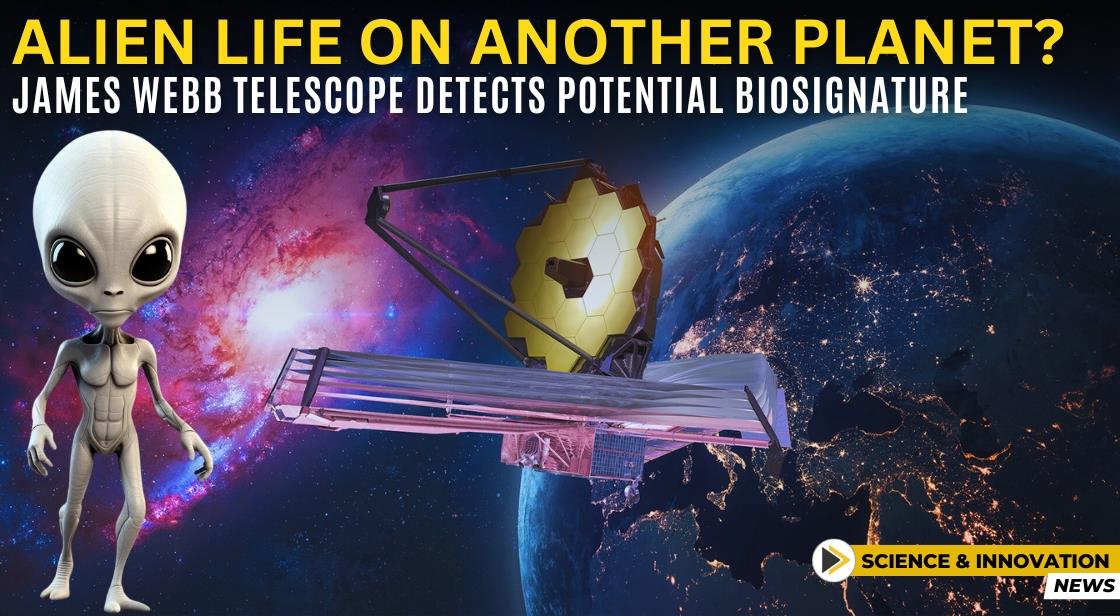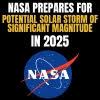Alien Life on Another Planet? James Webb Telescope Detects Potential Biosignature

News Synopsis
The advent of the James Webb Space Telescope (JWST) in 2021 by National Aeronautics and Space Administration NASA marked a monumental leap in humanity's quest to unlock the secrets of the universe.
Now, recent developments have sparked excitement as the JWST embarks on a groundbreaking mission: probing a distant exoplanet in a neighboring solar system, potentially offering tantalizing evidence of extraterrestrial life.
Amidst the vast expanse of space, fundamental questions persist: Are we truly alone in the cosmos?
Could life on Earth be a rare anomaly or merely one instance in a universe teeming with vitality and consciousness?
The JWST stands poised to provide scientific insights into these age-old inquiries, leveraging its unparalleled capabilities to scrutinize distant worlds and shed light on the possibility of life beyond our planet.
A New Hope: The Hunt for Life Beyond Earth
A recent project by James Webb Space Telescope (JWST) has sparked immense excitement. Astronomers are focusing on a distant exoplanet, K2-18b, orbiting a red dwarf star called K2-18 in the constellation Leo. This far-off world holds immense potential – it could be one of the most compelling signs of life ever discovered outside our solar system.
For centuries, humanity has pondered a fundamental question: Are we alone in the universe? The JWST's advanced technology might finally offer scientific answers. Can life exist elsewhere, perhaps even intelligent life? These are no longer just philosophical musings; they are within the realm of scientific investigation.
A Potentially Habitable World Under Scrutiny: K2-18b
The object of JWST's recent investigation is a distant exoplanet called K2-18b. Located 124 light-years away in the constellation Leo, this strange world orbits a faint red dwarf star called K2-18. K2-18b is roughly 2.6 times the size of Earth and is believed to be a water-covered planet, making it a prime candidate for harboring life as we know it.
A Tantalizing Clue: Dimethyl Sulfide (DMS)
The latest buzz surrounding the JWST stems from the detection of a fascinating gas in K2-18b's atmosphere – dimethyl sulfide (DMS). Here on Earth, DMS is primarily produced by living organisms, particularly marine phytoplankton. While the presence of DMS doesn't definitively confirm life on K2-18b, it serves as a significant clue that scientists are eager to explore further.
محتمل على الحياة (Muḥtamil ʿalá al-ḥayāh) – The Challenge of Confirmation
Dr. Nikku Madhusudhan, the lead astronomer on the project from Cambridge University, emphasizes caution. The current JWST data suggests the presence of DMS with a confidence level exceeding 50%, but conclusive proof remains elusive. Further analysis of data collected during the telescope's eight-hour observation period is needed to solidify these findings. Additionally, scientists haven't ruled out the possibility of non-biological processes creating DMS on K2-18b.
Unveiling the Secrets of Exoplanet Atmospheres: The Power of Spectroscopy
The JWST's approach to searching for life focuses on spectroscopy. By analyzing the faint spectral signatures left behind as starlight filters through a planet's atmosphere, scientists can decipher the atmospheric composition, revealing clues about potential habitability.
Beyond K2-18b: Unveiling the "Missing Methane Problem"
The JWST's observations have yielded even more intriguing data. K2-18b's atmosphere appears to contain methane and carbon dioxide, but lacks detectable levels of ammonia. This absence helps address the long-standing "missing methane problem" that has puzzled scientists for over a decade. However, further theoretical studies are underway to determine if these gases could have non-biological origins.
Standing on the Threshold of Discovery: The Future of Exoplanet Research
The meticulous examination of distant celestial bodies like K2-18b represents a crucial step towards unraveling the cosmic mystery of life. The JWST is at the forefront of this endeavor, and as analysis of the collected data progresses, we may be on the verge of a profound scientific discovery that could rewrite our understanding of the universe and our place within it.
You May Like









